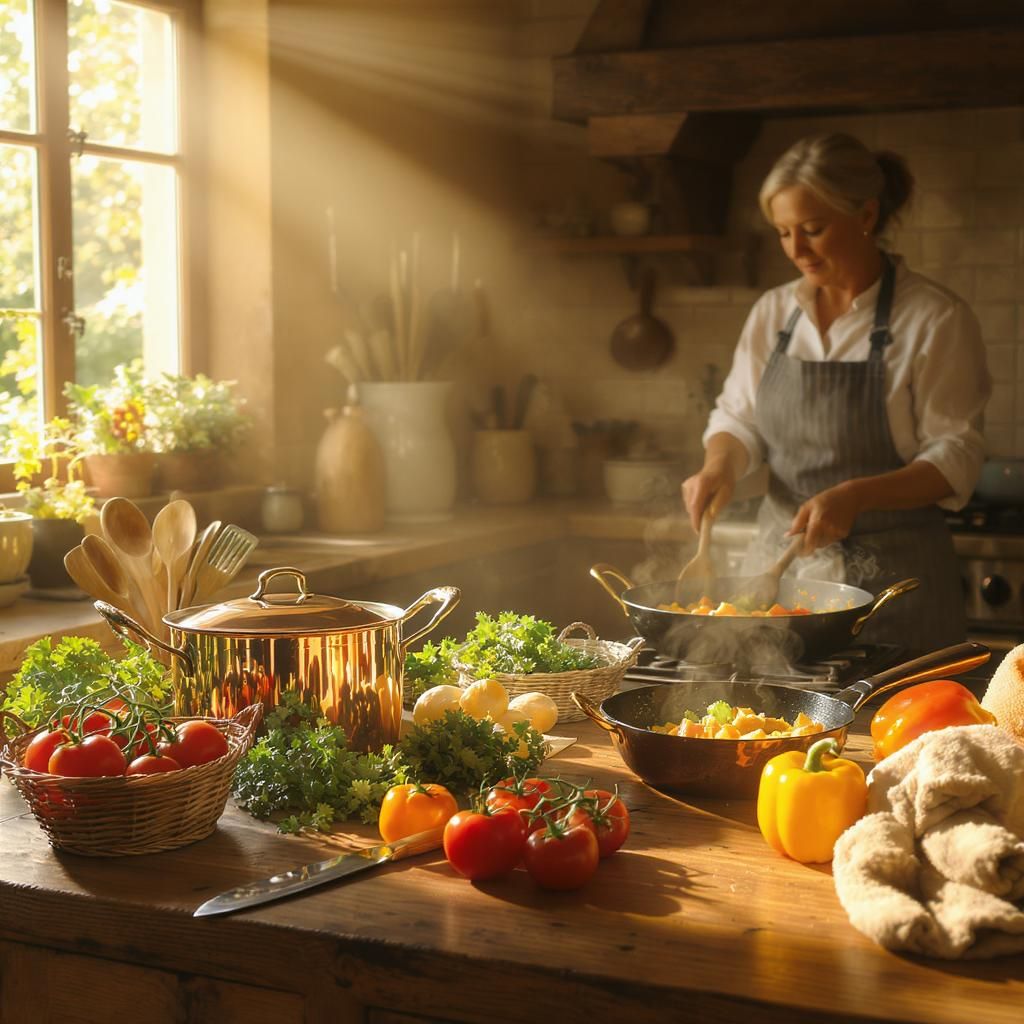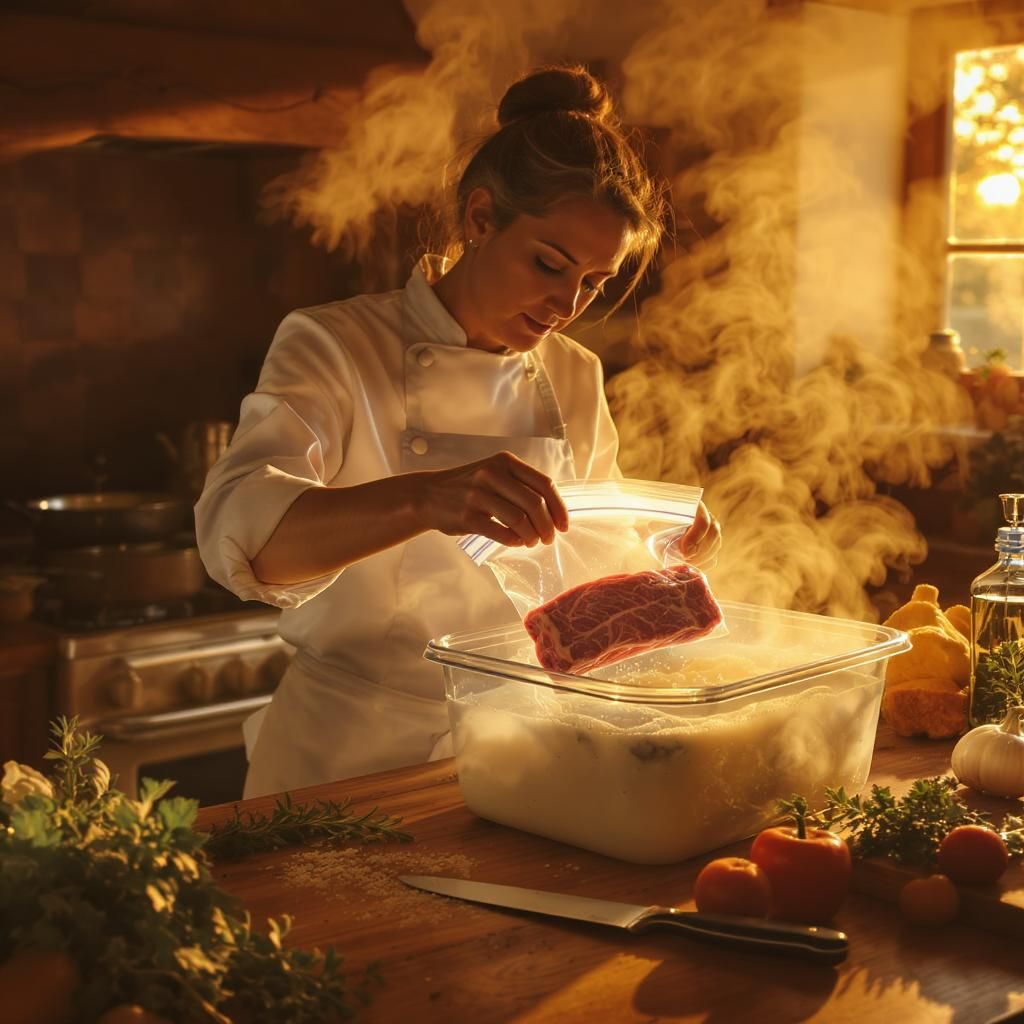Classic cooking techniques form the foundation of culinary skills, encompassing methods such as sautéing, roasting, poaching, and braising. Mastering these techniques enhances flavor, texture, and presentation in dishes. This guide serves as a resource for understanding the principles behind each method, offering tips for execution and highlighting their importance in creating timeless recipes.
Classic cooking techniques are the backbone of culinary arts, offering timeless skills that elevate any dish. Whether you’re a novice or a seasoned chef, mastering these methods can enhance your kitchen prowess and ignite your creativity.
Understanding Classic Cooking Techniques

As I dive into the world of classic cooking techniques, I find it essential to understand that these methods have been honed over centuries. They are not just recipes; they are foundational skills that have stood the test of time. Mastering these techniques opens the door to countless culinary possibilities, allowing me to adapt and create with confidence.
1. Mise en Place: The Foundation of Cooking
The first technique that I always prioritize is mise en place, a French term that translates to “everything in its place.” This approach means preparing all ingredients before starting to cook. I find that this not only streamlines the cooking process but also helps prevent mistakes. By measuring out spices, chopping vegetables, and organizing my workspace, I can focus on the art of cooking rather than frantically searching for ingredients. It’s like setting the stage for a beautiful performance.
2. Knife Skills: The Art of Precision
Next, I delve into the vital realm of knife skills. The way I handle a knife can make a significant difference in my cooking. From dicing onions to julienning carrots, mastering basic cuts enhances both presentation and cooking times. I remember the first time I learned to hold a chef’s knife properly; it felt like I had unlocked a new level in my cooking journey. The pinch grip allows me to have better control, and practicing these techniques consistently has made me more efficient in the kitchen.
3. Sautéing: The Quick and Flavorful Method
One of my favorite cooking techniques is sautéing. This method involves cooking food quickly in a small amount of fat over high heat. I love how sautéing allows me to develop deep flavors while retaining the texture and color of vegetables or proteins. The key is to ensure that my pan is hot enough before adding the oil, which helps create that beautiful sear. I often find myself experimenting with various aromatics like garlic, shallots, or herbs to enhance the flavor profile of whatever I’m cooking. The sizzling sound alone is enough to get my mouth watering!
4. Braising: Low and Slow for Tender Results
Braising is another technique I cherish, especially for tougher cuts of meat. This method combines both dry and wet heat: I start by searing the meat to develop a rich crust, then add liquid to the pot and cover it, allowing it to cook slowly. I’ve learned that patience is key here; the longer I let the meat simmer, the more tender and flavorful it becomes. Whether it’s a hearty beef stew or a comforting coq au vin, braising always results in a dish that feels like a warm hug on a cold day.
5. Roasting: Elevating Flavors through Dry Heat
Roasting is yet another classic technique that never fails to excite me. I relish the transformation that occurs when I place vegetables or meats in the oven. The dry heat caramelizes the natural sugars, resulting in a depth of flavor that is simply irresistible. I often toss my favorite veggies with olive oil, salt, and pepper before spreading them out on a baking sheet. The smell that fills my kitchen as they roast is nothing short of magical. Plus, roasting is a perfect hands-off cooking method that allows me to work on other elements of my meal.
6. Blanching and Shocking: Preserving Color and Crunch
Blanching and shocking is a technique that I frequently use when working with green vegetables. By briefly boiling the vegetables and then plunging them into ice water, I maintain their vibrant color and crisp texture. This method is perfect for preparing vegetables for salads or stir-fries. I love the way my green beans retain their bright green hue, making any dish visually appealing. Plus, it’s a great way to prep ahead of time; once blanched, I can store them in the fridge until I’m ready to use them.
7. Baking: The Science of Precision
Baking, often considered a science, is another classic technique that I enjoy exploring. It requires precise measurements and attention to detail. I’ve learned that even the slightest variation in ingredient ratios can lead to different outcomes. Whether I’m whipping up a batch of cookies or a decadent cake, following the recipe closely is crucial. I’ve found that understanding the roles of various ingredients helps me troubleshoot when things don’t go as planned. The joy of pulling a perfectly risen loaf of bread out of the oven is an experience I cherish.
As I reflect on these classic cooking techniques, I’m reminded that they form the core of my culinary journey. Each method brings its own set of skills and flavors, allowing me to grow and evolve in the kitchen. Whether I’m sautéing, braising, or baking, these timeless techniques not only enhance my cooking but also deepen my appreciation for the art of food. Learning and mastering them has opened up a world of possibilities, inviting me to create and share delicious meals with family and friends.
Exploring Advanced Techniques

As I continue my culinary exploration, I find that embracing advanced cooking techniques can elevate my skills even further. While the classic methods lay a solid foundation, delving into these more intricate techniques allows me to express my creativity and take my dishes to new heights.
8. Sous Vide: The Precision of Temperature Control
Sous vide has become one of my favorite techniques, especially for cooking proteins. The method involves sealing food in a vacuum bag and immersing it in a water bath at a precise temperature. I love how this technique ensures that my meats are cooked evenly and retain their moisture. The first time I tried sous vide steak, I was amazed at how tender and juicy it turned out. I seasoned the steak simply with salt and pepper, sealed it up, and let it cook for a couple of hours. Once it was done, I finished it with a quick sear in a hot pan, and the results were nothing short of spectacular. The control I have over the cooking temperature takes the guesswork out of achieving the perfect doneness.
9. Emulsification: Creating Magic with Dressings and Sauces
Emulsification is another advanced technique that I’ve come to appreciate, particularly in the realm of dressings and sauces. This process involves mixing two ingredients that usually don’t combine well, like oil and vinegar. I’ve learned that the key to a successful emulsion lies in the slow addition of oil while whisking vigorously. My favorite application is making homemade vinaigrettes; I love the burst of flavor that comes from fresh herbs and garlic combined with the creaminess of emulsified oils. I often experiment with different vinegar types, oils, and seasonings to create unique flavor profiles that perfectly complement my salads.
10. Confit: Preserving Flavor and Texture
Confit is a technique I find utterly fascinating and rewarding. Traditionally, it involves slow-cooking meat in its own fat, but I’ve also enjoyed experimenting with vegetables. The process requires patience as the food gently cooks, absorbing the flavors of the fat and aromatics. I remember the first time I made duck confit — it was a labor of love. The duck legs cooked low and slow in duck fat were incredibly tender and flavorful. I love serving them with a crisp salad or incorporating them into a rich pasta dish. The depth of flavor in confit dishes is something I strive to achieve in my kitchen whenever possible.
11. Fermentation: The Art of Transformation
Fermentation is a technique that has intrigued me for quite some time. It’s a magical process where microorganisms transform food, enhancing its flavor and extending its shelf life. I’ve dabbled in making my own kimchi and sauerkraut, and I relish the tangy and complex flavors that develop during fermentation. The first time I opened a jar of my homemade kimchi, I was taken aback by the depth of flavor. The process requires some patience and attention, but the reward is worth the wait. I love incorporating fermented foods into my meals for added flavor and health benefits.
12. Smoking: Infusing Flavor into Dishes
Smoking is a technique that adds a whole new dimension of flavor to my cooking. I enjoy the process of using wood chips to infuse meats, vegetables, or even cheeses with a rich, smoky aroma. My favorite method is hot smoking; I often prepare salmon this way. The first time I tried it, I was amazed by the contrast between the smoky exterior and the tender, flaky fish inside. I’ve experimented with various types of wood, like cedar and hickory, each imparting its unique flavor. Smoking not only enhances the taste but also creates a delightful experience for my palate.
13. Sous Vide Infusion: Elevating Flavors
Taking sous vide a step further, I’ve recently begun experimenting with sous vide infusion. This technique allows me to infuse flavors into liquids, oils, or spirits by cooking them at a low temperature with herbs, spices, or other flavoring agents. I recall making a basil-infused olive oil that transformed my dressings and marinades. The process is simple: I combine fresh basil with olive oil in a vacuum-sealed bag, cook it sous vide for a couple of hours, and then strain it. The resulting oil is vibrant and aromatic, enhancing even the simplest of dishes.
As I delve deeper into these advanced techniques, I’m continually reminded of the boundless opportunities for creativity and innovation in my culinary journey. Each method offers unique ways to explore flavor, texture, and presentation, expanding my cooking repertoire beyond the classics. By embracing both classic and advanced techniques, I’m not just cooking; I’m creating art that tells a story, evoking emotions and memories with every bite. My kitchen has become a canvas, and I’m excited to see how my skills continue to evolve.
Final Thoughts
Reflecting on my journey through classic and advanced cooking techniques, I realize that each method contributes to my growth as a home chef. The skills I’ve acquired not only enhance my cooking but also deepen my appreciation for the culinary arts. With every meal I prepare, I’m excited to share my love for cooking with family and friends, creating lasting memories around the table.
